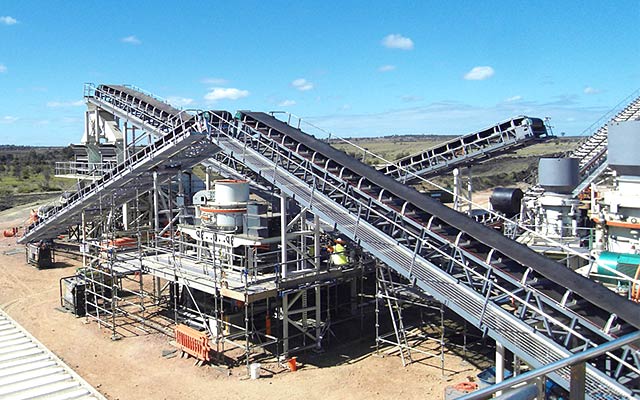Sand and gravel are essential materials in the construction industry, serving as key components in the production of concrete, asphalt, and other building materials. The process of crushing sand and gravel involves several stages to produce various grades and sizes of these crucial construction aggregates.

Mining and Extraction:
The process begins with the extraction of sand and gravel deposits from quarries, rivers, or other sources. Heavy equipment, such as excavators, loaders, and bulldozers, is used to remove the raw materials from the earth. This phase ensures the availability of high-quality aggregates for construction purposes.
Screening and Sorting:
Once extracted, the raw material is transported to a screening plant. In this stage, oversized rocks, debris, and other contaminants are removed from the sand and gravel mixture. Screens with different mesh sizes are employed to separate the materials based on their particle size. This step is crucial for ensuring that the final product meets the required specifications.
Crushing:
After screening, the coarse aggregates are sent to the crushing plant. The primary crusher, often a jaw crusher, breaks down large rocks into smaller, more manageable pieces. This initial crushing stage reduces the size of the material to a more uniform and workable size. Secondary and tertiary crushers are then used to further refine the particle size.
Washing:
Sand, being a natural product, may contain impurities such as clay, silt, and organic matter. To enhance the quality of the final product, the crushed material is subjected to a washing process. This involves the use of water and, in some cases, specialized washing equipment to remove impurities and fines. Washing helps meet the specific requirements for cleanliness and gradation.
Grading and Sorting:
The washed material is then sorted into different grades based on particle size. This is typically achieved using a combination of screens and conveyor systems. The sorted aggregates are stockpiled for storage or transported to different destinations, depending on their intended use.
Stockpiling and Storage:
The final product is stockpiled in designated areas for storage and later use. Proper stockpiling ensures that different grades of sand and gravel are readily available for construction projects. It also allows for quality control and testing before the aggregates are incorporated into concrete, asphalt, or other applications.
Quality Control:
Throughout the entire process, quality control measures are implemented to ensure that the aggregates meet industry standards and project specifications. This may involve periodic testing of the material for gradation, particle shape, and cleanliness.
The sand and gravel crushing process involves multiple stages, from mining and extraction to screening, crushing, washing, grading, and finally, stockpiling. Each stage is critical in producing high-quality aggregates that form the foundation of countless construction projects, contributing to the development of infrastructure and buildings essential for modern living.
